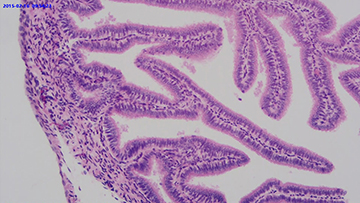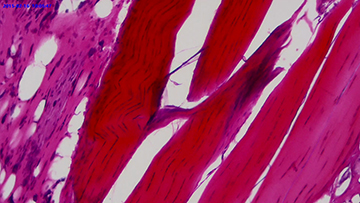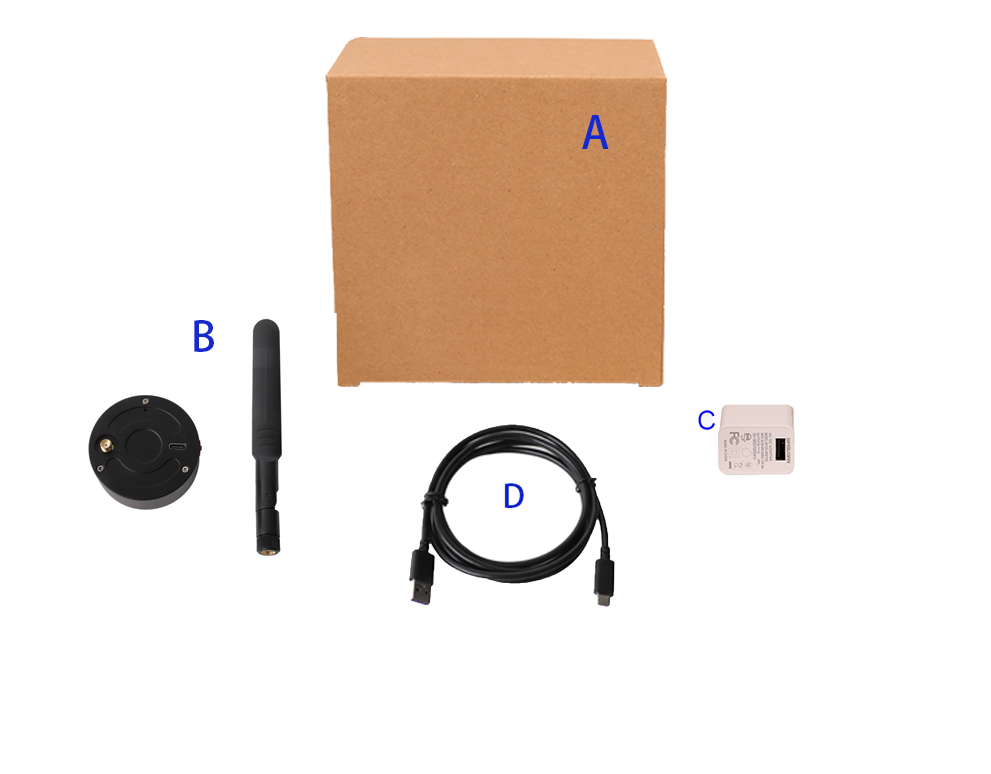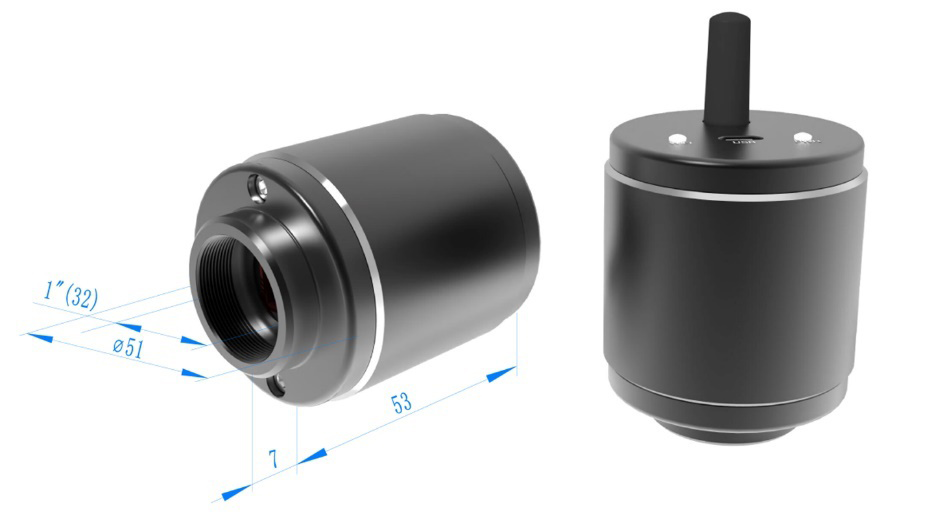WUCAM Series
Product Introduction
The WUCAM series cameras offer a complete USB + Wi-Fi dual-interface microscopy imaging solution, capable of connecting to smart devices and computers through wireless networks, or directly connecting to computers via USB interface for video and image acquisition in stereoscopic or biological microscopes.
This series includes three models: WUCAM8MPA features the Sony IMX678 Starvis 2 sensor, providing 4K ultra-high-definition resolution; WUCAM1080PB also utilizes the IMX678 sensor but optimized for 60 fps high frame rate output; WUCAM1080PA employs the Sony IMX307 sensor, offering an economical 1080P solution. All models support Wi-Fi AP/STA dual modes, equipped with 802.11ac/n chips and high-gain antennas for stable wireless transmission.
The entire series provides rich ISP processing functions, including professional adjustments for tone, saturation, ROI white balance, and more. Through ToupView/ToupLite professional software, users can fully utilize advanced processing functions such as layers, measurement, image stitching, image stacking for noise reduction, and multi-focal plane image fusion. It also supports iOS/Android mobile applications, enabling flexible multi-platform applications.
Product Features
- Sony Starvis/Starvis 2 back-illuminated CMOS sensors for lower noise and better light sensitivity
- USB Type-C/USB2.0 + Wi-Fi dual-interface output for flexible connectivity options
- Support from 1080P to 4K ultra-high-definition with 30 fps to 60 fps various specifications
- Wi-Fi supports AP/STA dual modes for multi-device networking applications
- Rich ISP processing functions including tone, saturation, and ROI white balance
- Ultra-Fine color engine with 3D noise reduction and local dynamic range adjustment
- ToupView/ToupLite software for convenient PC operation
- iOS/Android mobile applications available for free download from app stores
WUCAM Series
USB + Wi-Fi dual-interface CMOS camera series, supporting from 1080P to 4K ultra-high-definition imaging, ideal for microscopy imaging, interactive teaching, and multi-device collaborative observation.
| Model | Sensor/Size | Effective Pixels | Output Resolution | Frame Rate (fps) | Output Interface | Auto Focus | Lens Mount | Storage Support | Featured Functions |
|---|---|---|---|---|---|---|---|---|---|
| WUCAM8MPA |
Sony IMX678(C) Starvis 2
1/1.8" (7.68×4.32 mm)
|
2.0 µm × 2.0 µm | 8MP (3840×2160) |
USB-C: 30 fps@3840×2160 30 fps@2688×1512 30 fps@1920×1080; Wi-Fi: 30 fps@3840×2160 30 fps@1920×1080 30 fps@1280×720 |
USB-C Wi-Fi 802.11ac | C-mount | No local storage | 4K ultra-high-definition output Starvis 2 back-illuminated sensor Dual-interface output mode Wi-Fi AP/STA mode switching ROI white balance Ultra-Fine color engine 3D noise reduction Local dynamic range adjustment Anti-flicker function Multi-client simultaneous connection | |
| WUCAM1080PB |
Sony IMX678(C) Starvis 2
1/1.8" (7.68×4.32 mm)
|
2.0 µm × 2.0 µm | 2MP (1920×1080) |
USB-C: 60 fps@1920×1080; Wi-Fi: 60 fps@1920×1080 60 fps@1280×720 |
USB-C Wi-Fi 802.11ac | C-mount | No local storage | High frame rate 60 fps output Starvis 2 back-illuminated sensor Dual-interface output mode Wi-Fi AP/STA mode switching ROI white balance Ultra-Fine color engine 3D noise reduction Local dynamic range adjustment Anti-flicker function Multi-client simultaneous connection | |
| WUCAM1080PA |
Sony IMX307(C) Starvis
1/2.8" (5.57×3.13 mm)
|
2.9 µm × 2.9 µm | 2MP (1920×1080) | USB: 50 fps@1920×1080; Wi-Fi: 50 fps@1920×1080 | USB2.0 Wi-Fi 802.11b/g/n | C-mount | No local storage | Dual output mode Wi-Fi AP mode High frame rate 50 fps output ROI white balance 3D noise reduction Multi-client connection H264 video encoding Economical solution |
WUCAM8MPA / WUCAM1080PB WiFi Camera | Packing List #
Standard Packing List
- A Camera box size: 17.0 cm × 15.0 cm × 6.0 cm (1 pcs, 0.5 kg per box)
- B WUCAM8MPA / WUCAM1080PB camera ×1
- C Power adapter: Input AC 100~240 V 50/60 Hz, output DC 5 V 2 A; US POWER-U-5V2A (SK12G-0500100U: UL/CE/FCC), EU POWER-E-5V2A (SK12G-0500100V: UL/CE/FCC)
- D USB Type-C to Type-A cable 1.5 m
Optional Accessories
- F Gigabit Ethernet cable
-
G Adjustable eyepiece tube adapters
Dia.23.2 mm eyepiece to C-mount: 108001/AMA037, 108002/AMA050, 108003/AMA075 (choose based on the camera and microscope).
-
H Fixed eyepiece tube adapters
Dia.23.2 mm eyepiece to C-mount: 108005/FMA037, 108006/FMA050, 108007/FMA075. Note: confirm camera interface and scenario before choosing G or H; engineers can assist.
- I 108015 (Dia.23.2 mm→30.0 mm) adapter ring for 30 mm eyepiece tubes
- J 108016 (Dia.23.2 mm→30.5 mm) adapter ring for 30.5 mm eyepiece tubes
- K Micrometer: 106011/TS-M1 (X=0.01 mm/100Div.), 106012/TS-M2 (X,Y=0.01 mm/100Div.), 106013/TS-M7 (X=0.01 mm/100Div., 0.10 mm/100Div.)
- L SD card (16 GB+)
WUCAM1080PA WiFi Camera | Packing List #
Standard Packing List
- A Camera box size: 17.4 cm × 17.4 cm × 7.6 cm (1 pcs, 0.54 kg per box)
- B WUCAM1080PA camera ×1
- C Power adapter: Input AC 100~240 V 50/60 Hz, output DC 5 V 1 A; US POWER-U-5V1A (SK12G-0500100U: UL/CE/FCC), EU POWER-E-5V1A (SK12G-0500100V: UL/CE/FCC)
- D Micro USB data cable 1.5 m
Optional Accessories
-
E Adjustable eyepiece tube adapters
Dia.23.2 mm eyepiece to C-mount: 108001/AMA037, 108002/AMA050, 108003/AMA075 (choose based on the camera and microscope).
-
F Fixed eyepiece tube adapters
Dia.23.2 mm eyepiece to C-mount: 108005/FMA037, 108006/FMA050, 108007/FMA075. Note: confirm camera interface and scenario before choosing E or F; engineers can assist.
- G 108015 (Dia.23.2 mm→30.0 mm) adapter ring for 30 mm eyepiece tubes
- H 108016 (Dia.23.2 mm→30.5 mm) adapter ring for 30.5 mm eyepiece tubes
- I Micrometer: 106011/TS-M1 (X=0.01 mm/100Div.), 106012/TS-M2 (X,Y=0.01 mm/100Div.), 106013/TS-M7 (X=0.01 mm/100Div., 0.10 mm/100Div.)
- K SD card (16 GB+)
WUCAM8MPA / WUCAM1080PB WiFi Camera | Product Dimensions #
Interface panel and power module dimensions
Please confirm mounting holes and interface orientation per the dimension drawing before installation.
Deep Dive
The Touptek WUCAM series is a complete USB + Wi-Fi dual-interface microscopy solution built for high-quality video and image capture on stereo and biological microscopes. Flexible connectivity and a broad product lineup cover needs from classroom demos to professional research.
The lineup includes three models: WUCAM8MPA with Sony IMX678 Starvis 2 delivering 4K ultra HD (3840×2160); WUCAM1080PB using the same sensor tuned for 60 fps high-frame-rate 1080p; and WUCAM1080PA with Sony IMX307 providing an economical 50 fps 1080p option.
All models support Wi-Fi AP/STA modes with 802.11ac/n plus high-gain antennas for stable wireless transmission. Paired with ToupView/ToupLite software, users can leverage the Ultra-Fine color engine, 3D noise reduction, ROI white balance, image stitching, multifocus fusion, and more.
Technical Highlights
- Advanced sensor tech: Sony IMX678 Starvis 2 and IMX307 BSI CMOS deliver excellent low-light performance and low noise with 1364 mV G sensitivity and 0.15 mV dark current
- Flexible resolution choices: From 1080p to 4K UHD, 30 fps to 60 fps; USB Type-C supports 30 fps@3840×2160, 30 fps@2688×1512, 60 fps@1920×1080, and more
- Dual-interface, dual-mode design: USB Type-C/USB 2.0 plus Wi-Fi 802.11ac/n outputs; Wi-Fi supports AP hotspot and STA networking for multi-device collaboration
- Professional ISP processing: Ultra-Fine color engine with exposure (0.04 ms–1000 ms), gain, ROI white balance, 3D noise reduction, local dynamic range tuning, and 50/60 Hz anti-flicker
- Full-platform software support: Compatible with Windows XP/7/8/10/11, macOS 10.10+, Linux 2.6.27+, plus iOS 11+ and Android 5.1+ apps for seamless cross-platform use
Core Benefits
-
1
Comprehensive Lineup From 4K UHD to high-frame-rate 1080p, from premium research to budget teaching, three models cover all needs
-
2
Sony Starvis 2 Strength Latest BSI CMOS tech with 2.0 µm pixels for excellent sensitivity and image quality
-
3
Smart Networking AP/STA dual modes enable interactive teaching networks that link instructors and students
-
4
Professional Software Ecosystem ToupView/ToupLite deliver layer management, precision measurement, stitching, overlay denoise, and multifocus fusion
-
5
Wide Applications Fits biomedical research, materials analysis, quality control, interactive teaching, remote diagnostics, and more















